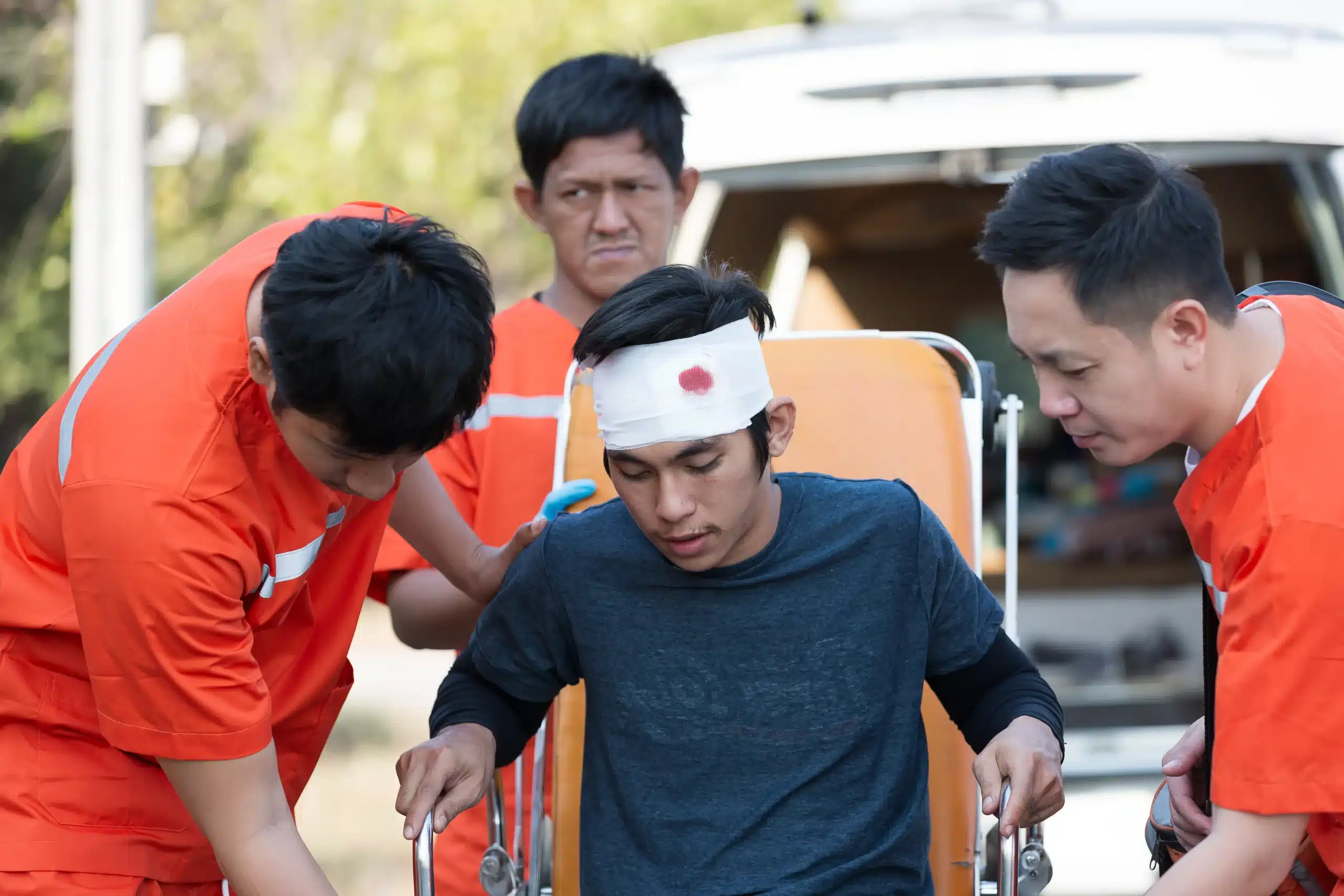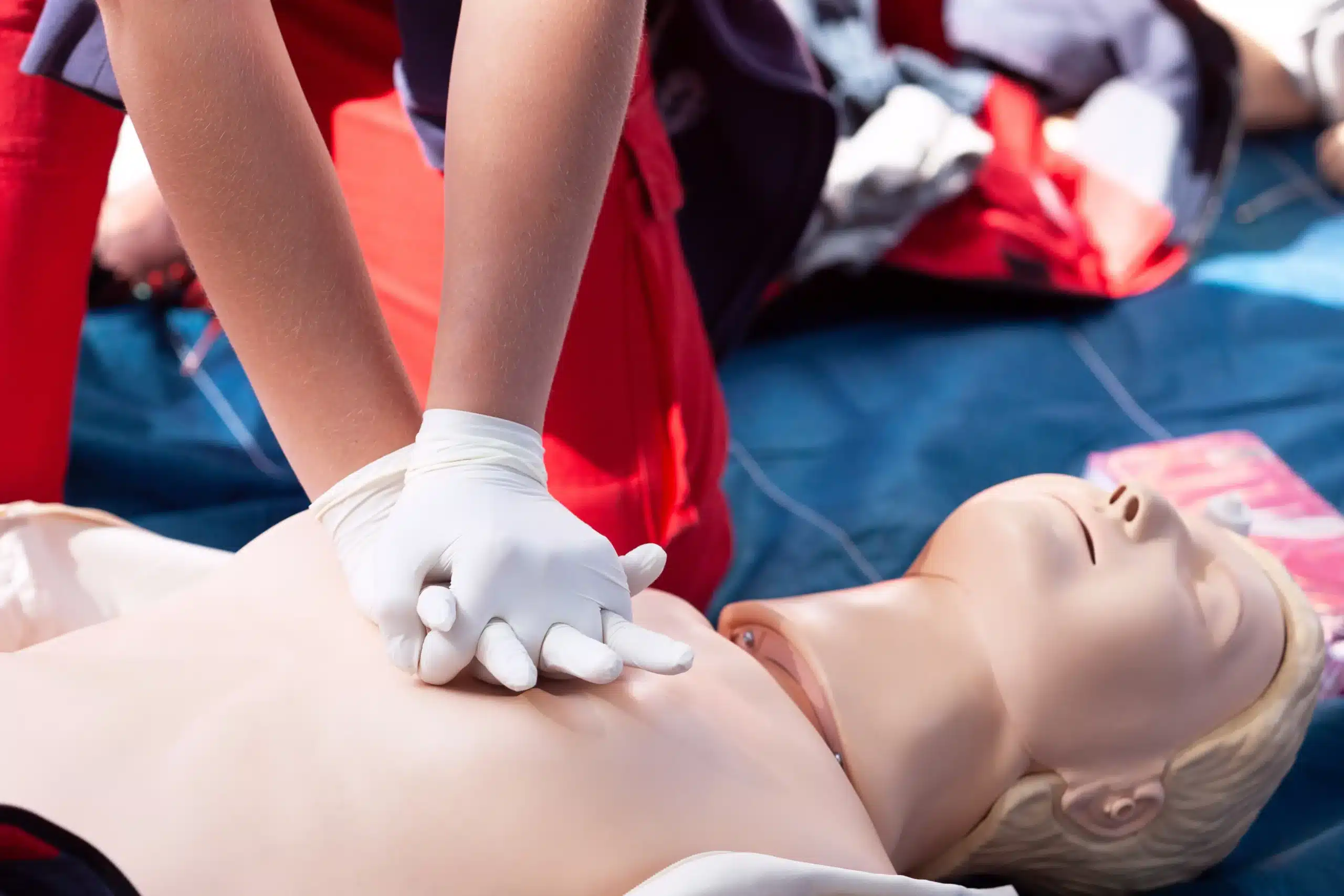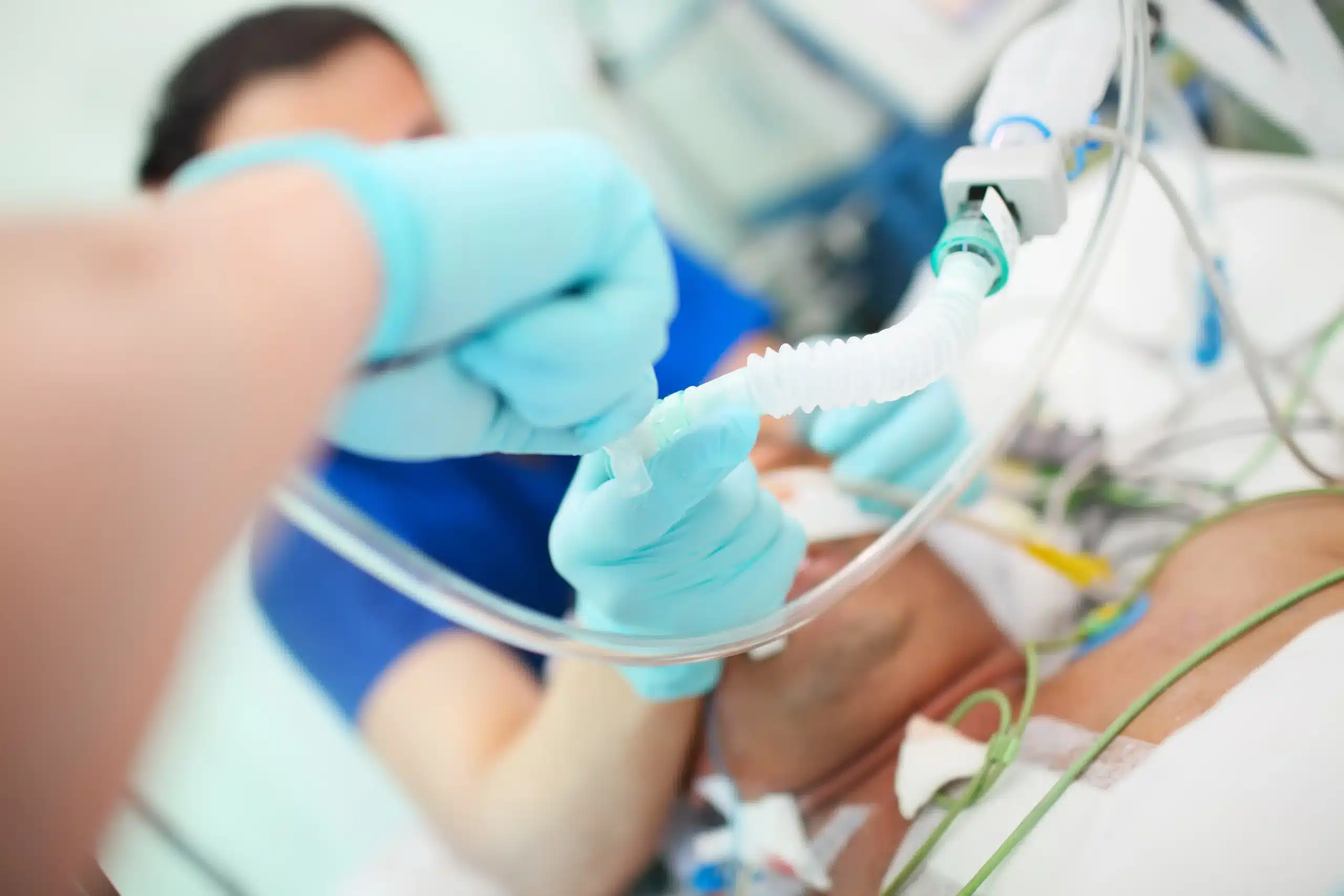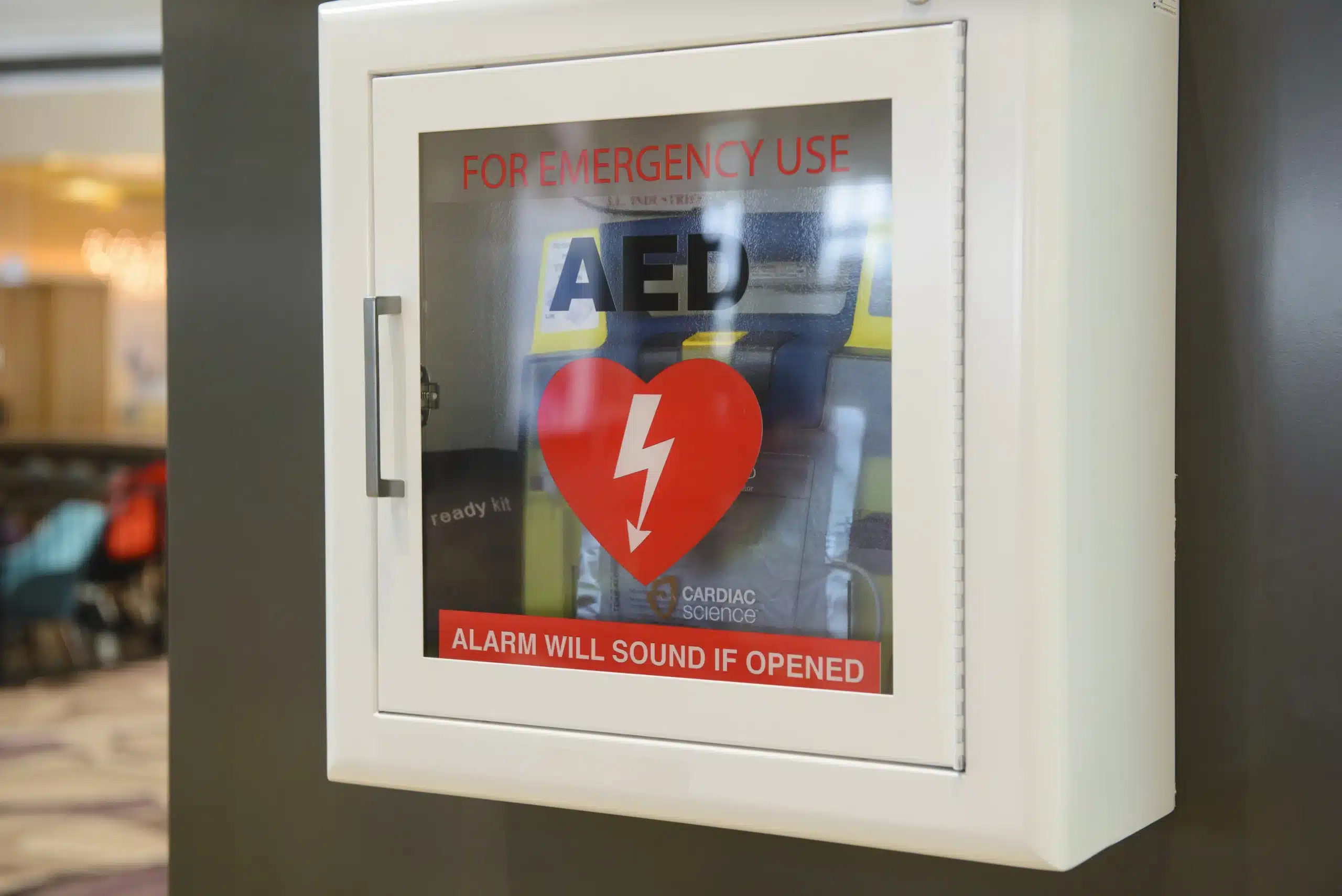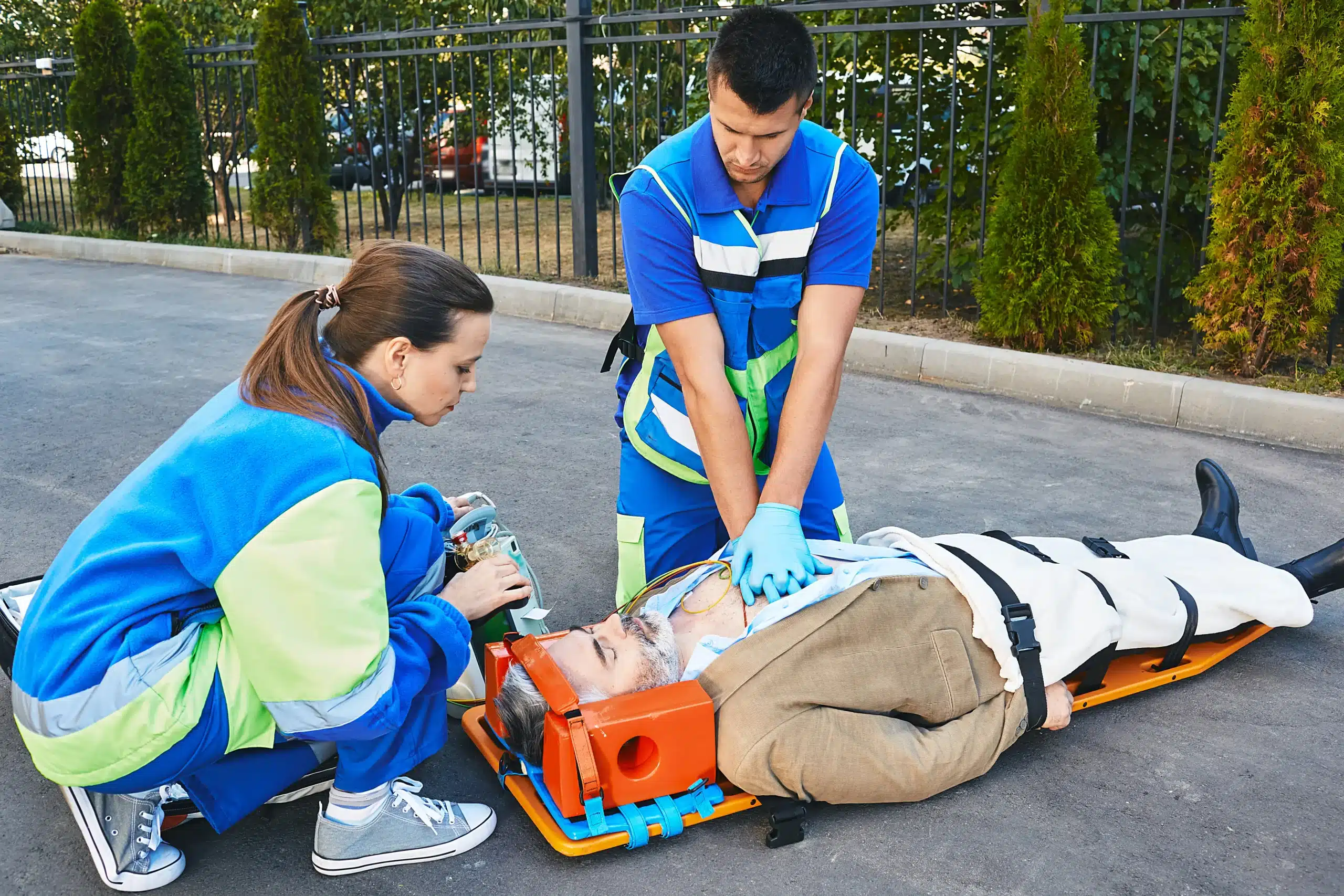Faced with a medical emergency, seconds can feel like hours. Knowing how to respond effectively can mean the difference between life and death. That’s where BLS (Basic Life Support) training comes in. BLS classes near me equip you with the skills to provide immediate care during critical situations, from performing CPR to using an AED. This comprehensive guide breaks down everything you need to know about BLS certification, including the different types of courses available, what to expect in a class, and how to choose the right training provider. Whether you’re a healthcare professional or simply want to be prepared for anything, this post will help you find the perfect BLS class to fit your needs and empower you to save lives.
Key Takeaways
- BLS certification equips you with essential life-saving skills: From CPR and AED use to airway management, BLS training empowers you to respond effectively in medical emergencies. Explore different learning formats—in-person, online, or blended—to find the best fit.
- Select a reputable BLS training provider: Prioritize providers offering AHA or Red Cross certification. Check student reviews and verify instructor credentials to ensure a high-quality course. Consider factors like cost, location, and schedule to meet your needs.
- Stay current with BLS guidelines and maintain your skills: Renew your certification every two years and pursue continuing education opportunities. Regular practice and updated knowledge are crucial for confident and effective emergency response.
What are BLS Classes & Why are They Important?
BLS (Basic Life Support) classes teach essential life-saving skills needed in emergencies. These courses empower you to respond effectively when every second counts. From recognizing the signs of cardiac arrest to providing high-quality chest compressions, BLS training gives you the confidence to act quickly and potentially save a life. BLS isn’t just about technical skills; it also emphasizes teamwork, clear communication, and following established protocols in critical situations.
Essential Life-Saving Skills
BLS certification goes beyond basic CPR. The Red Cross explains that BLS is a more advanced certification designed for healthcare professionals and first responders, covering CPR, AED use, and airway obstruction techniques. This comprehensive approach prepares you for various medical emergencies. These skills are invaluable for healthcare providers and anyone who wants to help in a crisis. Learn more about BLS training through the Red Cross.
Professional BLS Certification Requirements
For many healthcare professionals, BLS certification is a job requirement. It demonstrates a commitment to high-quality patient care and staying current with life-saving techniques. While specific requirements vary, maintaining your BLS certification often involves completing an online component and an in-person skills assessment, as highlighted by the American Heart Association. This blended learning approach ensures you have both theoretical knowledge and practical skills. Regular renewal keeps your skills sharp and your certification valid. The Red Cross notes that BLS certification is valid for two years (using Georgia as an example). Check with your local certifying body for specific requirements in your area.
BLS Class Types Near You
Finding the right BLS class format is the first step. Let’s break down the different types of BLS classes available, weighing the pros and cons of each to help you make the best choice.
In-Person BLS Classes
In-person BLS training offers a hands-on learning experience crucial for mastering these life-saving skills. You’ll learn alongside other students, practice skills in real-time, and receive immediate feedback from a certified instructor. This direct interaction is invaluable for building confidence and ensuring you can effectively respond in emergencies. In-person classes also provide the opportunity to ask questions, clarify doubts, and engage in discussions with both the instructor and your peers. If you thrive in a structured, interactive learning environment, in-person training might be the perfect fit.
Online BLS Classes
Online BLS courses offer undeniable convenience and flexibility. You can learn at your own pace, revisit materials as needed, and fit the training around your busy schedule. However, it’s important to remember that the American Heart Association (AHA) requires both an online component and an in-person skills assessment for certification. This means there’s no fully online option for AHA certification, and online-only training may not meet all workplace requirements. Think of the online portion as a valuable tool for learning the theoretical concepts, which you’ll then put into practice during the required in-person skills session.
Blended Learning BLS Classes
Blended learning combines the best of both worlds. This format allows you to complete the theoretical coursework online at your own pace, then attend an in-person skills session to practice and demonstrate your abilities. Blended learning offers a flexible approach that caters to different learning styles and busy schedules. You can review the online materials as often as you need, ensuring a solid understanding of the concepts before practicing your skills with a certified instructor. This approach can be particularly helpful for those who prefer to absorb information independently but still value the hands-on training and expert guidance of an in-person session. The blended learning option is a great way to gain a comprehensive understanding of BLS while accommodating your personal learning style and schedule.
Find & Evaluate BLS Training Providers
Finding the right BLS training provider is just as important as understanding the material. Here’s what to look for when evaluating different options:
AHA or Red Cross Certification
Most employers require BLS certification from either the American Heart Association (AHA) or the American Red Cross. Both organizations offer high-quality, comprehensive training programs that meet national standards. Make sure the provider you choose offers certification from one of these respected organizations. While the core skills taught are similar, some employers may have a preference, so it’s always best to confirm their requirements beforehand. AHA certification is often preferred for healthcare professionals, while Red Cross certification may be suitable for a broader range of professions. For example, Safety Training Seminars offers various AHA-approved courses, including BLS, ACLS, and CPR and First Aid.
Reviews & Testimonials
Before committing to a BLS course, take some time to read reviews and testimonials from previous students. These firsthand accounts can offer valuable insights into the quality of instruction, the learning environment, and the overall experience. Pay close attention to reviews that specifically mention hands-on training and the certification process. Positive feedback about instructors who provide clear explanations, personalized feedback, and create a supportive learning atmosphere can be a strong indicator of a worthwhile course. Check out these testimonials to see what past Safety Training Seminars students have to say.
Instructor Credentials
The expertise and experience of your BLS instructor play a crucial role in your learning experience. Look for instructors who are not only certified by the AHA or Red Cross but also have a strong background in healthcare or emergency medical services. Experienced instructors can offer real-world examples, answer your questions thoroughly, and provide the personalized guidance you need to master the skills confidently. Their practical insights can make the difference between simply learning the steps and truly understanding how to apply them in a real-life emergency. Learn more about the qualified instructors at Safety Training Seminars.
What to Expect in a BLS Class
So, you’ve decided to take a BLS class—fantastic! Knowing what to expect can help you feel prepared and ready to learn. This section covers the typical BLS class experience, from curriculum to exam.
Curriculum Overview
BLS classes cover the core skills needed to respond to life-threatening emergencies. The curriculum typically aligns with the latest American Heart Association (AHA) guidelines and includes training on CPR for adults, children, and infants, how to use an automated external defibrillator (AED), and relieving airway obstructions. You’ll learn to recognize the signs of a cardiac arrest, stroke, and choking, and how to provide appropriate care until professional help arrives.
Class Duration & Format
BLS classes are offered in several formats. You can choose in-person training, online learning, or a blended learning experience that combines online coursework with in-person skills practice. In-person classes usually take a few hours, depending on the provider and whether you’re also pursuing other certifications. The blended learning format lets you complete the cognitive portion online at your own pace, followed by a shorter in-person session for the skills check and certification exam.
Hands-On Training
Hands-on practice is a crucial part of BLS training. While online courses offer valuable knowledge, in-person training lets you develop and refine your skills with a certified instructor. You’ll practice CPR techniques on manikins, learn to operate an AED, and work through various emergency scenarios. This hands-on experience builds muscle memory and confidence, preparing you to act effectively in a real emergency. Look for classes that emphasize hands-on learning, like those at Safety Training Seminars.
Certification Exam
Most BLS courses conclude with a certification exam to assess your knowledge and skills. The exam typically involves a written component and a practical skills test. You’ll demonstrate your CPR technique, AED use, and ability to manage obstructed airways on a manikin. Successfully completing the exam earns you a BLS certification card, valid for two years. The AHA requires both a written and practical component for their BLS certification, so choose a course that meets these requirements.
BLS vs. Other CPR Certifications
BLS (Basic Life Support) certification differs from standard CPR training. CPR teaches the basics of chest compressions, rescue breaths, and AED use, but BLS builds upon this foundation. It provides a deeper level of knowledge specifically designed for healthcare professionals and first responders. BLS covers a broader range of skills for managing cardiac arrest and other life-threatening emergencies, such as advanced airway management and ventilation techniques. Consider BLS as a comprehensive upgrade to CPR, with crucial additions tailored for professional rescuers. Learn more about our BLS certification.
Advanced BLS Techniques
BLS training adheres to the American Heart Association (AHA) guidelines and includes a comprehensive curriculum. You’ll develop essential skills like high-quality CPR for adults, children, and infants, proper AED use, and effective procedures for managing obstructed airways. BLS also emphasizes the importance of teamwork, clear communication, and a systematic approach in emergencies.
Who Needs BLS Training?
BLS certification is often a prerequisite for healthcare providers, including physicians, nurses, paramedics, and other professionals working in clinical settings. It’s also essential for those in emergency response roles, such as firefighters, police officers, and lifeguards. Even if not explicitly required for your current job, Safety Training Seminars offers various courses, including BLS certification, to equip you with these life-saving skills.
Prepare for Your BLS Class
Getting ready for your BLS class involves a little bit of prep work. Knowing what to expect and having the right materials can make your learning experience smoother and more effective. Here’s a breakdown of how to prepare:
Materials & Equipment
While your BLS provider will supply the mannequins and AED trainers for use during class, you might want to supplement your learning with a few resources. The American Red Cross offers training materials like textbooks and DVDs. These can be helpful for reviewing key concepts before and after class.
Pre-Course Study
Many BLS certification courses, especially those aligned with American Heart Association (AHA) guidelines, require pre-course work. This often involves an online component covering essential theory and knowledge. Make sure you complete this online portion before your in-person skills session. The in-person skills check is essential for AHA BLS certification. Plan accordingly to finish the online modules and be fully prepared for your hands-on training.
What to Wear & Bring
Dress comfortably for your BLS class. You’ll be actively participating in hands-on practice, so choose clothing that allows for a full range of motion. The best BLS classes prioritize in-person training, giving you ample opportunity to practice CPR and AED techniques. Bring a notepad and pen to jot down notes and any key reminders from your instructor. This will help you remember these tips when putting your skills to use.
BLS Class Costs & Discounts
Getting BLS certified is an investment in your skills and ability to help others. Let’s break down the typical costs associated with BLS classes and explore ways to make the training more affordable.
Average BLS Training Costs
BLS certification costs vary based on several factors, including your location, the training provider, and the course format. Generally, you can expect BLS certification courses to range from $60 to $150. This usually covers your course materials, the certification exam, and often a digital certification card. CPR Care discusses BLS costs and emphasizes the value of the training. Remember, prices can change, so it’s always a good idea to check with the specific provider for their most up-to-date pricing. Health Education Pro also offers insights into how BLS certification costs can vary.
Group Rates & Financial Aid
If you’re training a team or group, many BLS providers offer discounted group rates. This can significantly lower the per-person cost, making it a budget-friendly option for workplaces, community groups, or families. It’s worth inquiring about group discounts when you contact a training center. CPR Care explains how these discounts can make training more accessible. Additionally, some organizations provide financial aid or scholarships to individuals who qualify. This assistance can make BLS training accessible to those who might otherwise face financial barriers.
Local Provider Offers
It’s always smart to check with local training providers for special offers or promotions. Community colleges, hospitals, and local health organizations sometimes offer BLS classes at reduced rates or even free of charge to specific groups. Safety Training Seminars, for example, offers a low price guarantee on their courses. Also, keep an eye out for seasonal discounts or special rates for students and first responders. A little research can go a long way in finding affordable BLS training options in your area.
Maintain Your BLS Certification
Keeping your BLS certification current is vital for healthcare providers and anyone who needs to respond to medical emergencies. This section covers everything you need to know about renewing your certification, staying up-to-date on the latest guidelines, and maintaining your skills.
Renewal Requirements
BLS certification is typically valid for two years. To maintain your active status, you’ll need to complete a recertification course before your current certification expires. Many providers, like Safety Training Seminars, offer recertification courses for those within 30 days of their expiration date, giving you some flexibility in scheduling. This ensures you can continue providing care without interruption.
Continuing Education
Even with a valid certification, it’s essential to keep your skills sharp. The American Red Cross and other organizations emphasize a blend of theoretical knowledge and practical skills training. Regularly reviewing refresher materials and practicing your techniques can help you stay prepared for any emergency. Look for resources and continuing education opportunities that align with the latest AHA guidelines, covering CPR, AED use, and obstructed airway procedures for adults, children, and infants. Safety Training Seminars offers a variety of courses to help you maintain your skills.
Updated BLS Guidelines
Staying informed about updates to BLS guidelines is crucial for providing the best possible care. These guidelines are periodically revised to reflect the latest scientific evidence and best practices in resuscitation. Recertification courses incorporate these updates, ensuring your training remains current and relevant. High-quality BLS courses are designed to improve patient outcomes by emphasizing critical thinking, teamwork, and effective communication during emergencies. Staying current not only maintains your certification but also equips you with the knowledge and skills to confidently handle any situation.
Top Local BLS Training Providers
Finding the right BLS training provider is an important step. Here are a few reputable organizations and local options to consider:
Safety Training Seminars
If you’re in San Mateo, Daly City, or Millbrae, Safety Training Seminars offers a variety of CPR and first-aid courses, including BLS. Known for their excellent customer service and a low price guarantee, they’re a convenient option for locals. Learn more about their BLS certification and explore additional offerings like ACLS and combined CPR and First-Aid training. Healthcare professionals seeking an RQI program can find RQI classes as well. Their commitment to a low price guarantee makes quality training more accessible.
American Heart Association
The American Heart Association (AHA) is a leading provider of BLS training and certification. AHA certification is widely accepted and often a requirement for healthcare employers. Locate an AHA-approved BLS course in your area through their website.
American Red Cross
The American Red Cross is another respected organization offering BLS certification. They provide various course formats, including in-person, online, and blended learning options. Find a course that suits your needs by reviewing their BLS training programs. They also offer location-specific training, such as their BLS courses in Georgia.
National Safety Council
The National Safety Council provides BLS training programs. Visit their website for details about their courses and training centers.
American Safety & Health Institute
The American Safety & Health Institute (ASHI) offers various safety and health training courses, including BLS. Explore their website for more information on BLS certification and other available courses.
Related Articles
- BLS Certification in Millbrae: Your Guide – San Mateo CPR Classes
- BLS HeartCode Daly City: Your Certification Guide – San Mateo CPR Classes
- BLS Certification for Healthcare Providers in Daly City – San Mateo CPR Classes
- HeartCode BLS San Mateo: Your Certification Guide – San Mateo CPR Classes
- BLS Courses in San Mateo: The Complete Guide – San Mateo CPR Classes
Frequently Asked Questions
How long does it take to get BLS certified?
The time commitment varies depending on the course format. In-person BLS classes typically take a few hours to complete, while blended learning allows you to work through the online portion at your own pace before attending a shorter in-person skills session.
What’s the difference between BLS and CPR certification?
BLS builds upon the foundational skills taught in CPR classes. While CPR covers basic life support techniques, BLS provides a more comprehensive training program designed for healthcare professionals and first responders, encompassing advanced airway management, ventilation techniques, and a deeper understanding of emergency medical care.
How much does a BLS class cost?
BLS class costs typically range from $60 to $150, depending on factors like location, training provider, and course format. Look for providers offering group discounts or check with local organizations for potential cost savings.
How often do I need to renew my BLS certification?
BLS certification is generally valid for two years. You’ll need to complete a recertification course before your current certification expires to maintain your active status and ensure your skills are up-to-date.
What if my BLS certification is about to expire?
Many BLS training providers offer recertification courses for those within 30 days of their expiration date. Contact your provider or check their website for recertification options to seamlessly renew your credentials.
